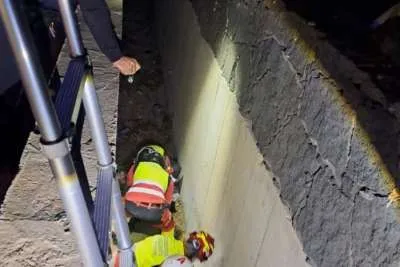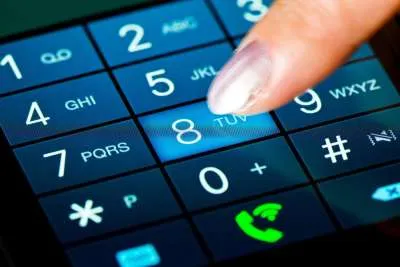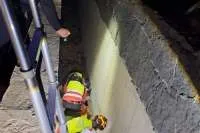How O2 phone signal boosters are conquering the battlefield of mobile connectivity
- 13-03-2023
- Business
- Canarian Weekly
We have become accustomed to mobile connectivity in our daily lives. Whether at home, at work, or on the go, we rely on our mobile devices to stay connected with the world around us. However, poor network coverage can be a significant issue for mobile users, particularly in areas with weak or spotty signals. This is why the O2 phone signal booster in the UK is becoming an increasingly popular solution for improving mobile web coverage, according to experts from UCell.
This article is a journey through the battlefield of mobile connectivity, where O2 has been fighting to provide reliable system coverage. We'll explore the pressing issue of inadequate network coverage for wireless communication users and how O2 phone amplifiers at https://www.myamplifiers.com/ act in the capacity of life-saving weapons. Additionally, you'll learn about how these amplifiers function and the prospects of 5G and the Internet of Things, including new strategies that can conquer this battlefield.
Background
Historically, achieving reliable mobile network coverage has been a battlefield where cellular technology's limitations and the challenge of maintaining consistent signals across vast territories have been the enemy.
As with other system providers, O2, a British telecommunications services provider, has had to wage war delivering consistent network coverage, especially in remote or densely populated areas where the enemy is more robust.
Current State of Affairs
Network coverage is a familiar field of battle for wireless users, especially in areas with rugged terrain and insufficient infrastructure on the enemy's side. To conquer this battlefield, O2 wireless transmission boosters have become a popular weapon to improve web coverage in these areas. These amplifiers act as reconnaissance units that pick up weak signals from nearby cell towers and amplify them to provide better, more vital communications inside buildings or sites with the poor network coverage.
Several telephone signal amplifiers are available, including single-band and multi-band amplifiers. Single-band amplifiers are designed to amplify a signal in a single frequency range. In contrast, multi-band amplifiers act as tactical devices that can strengthen a call for multiple frequency ranges, making them assets on the battlefield.
Problems arise with O2 phone signal amplifier technology:
1 O2 mobile reception enhancers may interfere with other wireless signals, such as those used by nearby networks, causing signalling disruptions or reduced performance.
2 Some phone signal enhancers may not be compatible with specific devices, networks, or web technologies, leading to connectivity issues or reduced network coverage.
3 O2 telecom connectivity reinforcements may be restricted by local laws or regulations, requiring users to obtain permits or comply with certain limits to avoid legal penalties.
4 Network connectivity amplifiers can be expensive to purchase and install, making them less accessible to users who may benefit from them but cannot afford them.
5 Even with a phone signal amplifier, stable or reliable signal coverage cannot be achieved in some areas, especially in remote or rural areas where cell towers are few and far between.
Identifying a Poor O2 Signalling Phone in the UK: Common Features to Watch Out For
Just as a soldier in a warzone faces communication challenges due to obstacles such as rough terrain, enemy interference, and distance from the command centre, a person in the UK using a lousy O2 signal phone also experiences communication difficulties. The weak or inconsistent network coverage, slow internet speeds, dropped calls or lost connections, and poor call quality can be compared to a soldier's struggle to communicate amidst the chaos of war.
To overcome these challenges, O2 wireless transmission amplifiers serve as a powerful weapon, like a reliable communication system that assists soldiers in navigating the battlefield and effectively relaying critical information to their superiors.
Future Development
O2 connectivity amplifier technology requires forward-thinking and innovative solutions, just as a soldier in a war zone faces unexpected challenges that demand quick thinking and resourcefulness. This technology's potential for significant improvements is like a battle strategy that anticipates and prepares for future obstacles.
For instance, the upcoming 5G technology may act as a game-changing weapon that eliminates the need for communication amplifiers, just as a new weapon system can revolutionise warfare. Additionally, the Internet of Things represents a new battleground where opportunities arise for strengthening mobile connectivity.
In a remote area with no O2 mobile network signal, a stranded tourist is like a soldier cut off from communication with the command centre. The absence of a sign means the tourist cannot request help in an emergency. However, like a portable field radio, an O2 phone signal enhancer is a life-saving device that amplifies weak reception and improves phone connectivity. With this device, the traveller can call and request emergency assistance, just as a soldier can send a distress signal to the command centre for immediate rescue.
Potential developments in O2 mobile reception booster technology:
1 O2 cellular signal enhancers may be developed with more robust amplifiers to boost reception strength and coverage in areas with weak or spotty signals.
2 Wireless communications of signal amplifiers may be developed with intelligent algorithms that can adapt to changes in the network environment, ensuring consistent and reliable coverage.
3 As 5G systems become more widespread, O2 mobile reception amplifiers may be developed to support this technology, providing faster data speeds and improved network coverage.
4 O2 wireless transmission amplifiers may be developed with mesh networking capabilities, allowing them to collaborate to create seamless communication coverage across large areas.
5 Next-generation wireless communications may be developed with improved compatibility and integration with IoT devices, providing better network coverage and connectivity for these devices.
According to experts from UCtel, the future of O2 phone signal boosters can be compared to a victorious army marching forward. With promising advancements on the horizon, it's like a war where technology is advancing, and network coverage is improving, paving the way for more reliable and efficient boosters to seamlessly connect mobile devices.
Conclusion:
Mobile connectivity is a lifeline for millions, just as communication is crucial for soldiers on the battlefield. Poor network coverage can leave you stranded and alone, like a soldier cut off from the command centre. But fear not; O2 phone reception boosters are powerful, improving coverage and enabling seamless communication.
The future of O2 phone reception boosters is set to revolutionise the mobile industry as new weapons revolutionise warfare. Advancements in 5G compatibility, mesh networking, and intelligent algorithms are new battle strategies that take connectivity to the next level. No more dropped calls, buffering, or disconnection!
Access to vital digital resources is like essential supplies for soldiers on the front line. O2 mobile reception boosters empower individuals with the tools they need to succeed, just as a reliable communication system that helps soldiers accomplish their mission. The potential for significant improvements through 5G and the Internet of Things represents a new battleground, offering boundless connectivity and endless possibilities.
Other articles that may interest you...
Trending
Most Read Articles
Featured Videos
A Vision of Elvis Tenerife Promo
- 10-05-2025
TEAs 2025 Highlights
- 17-11-2025

























































